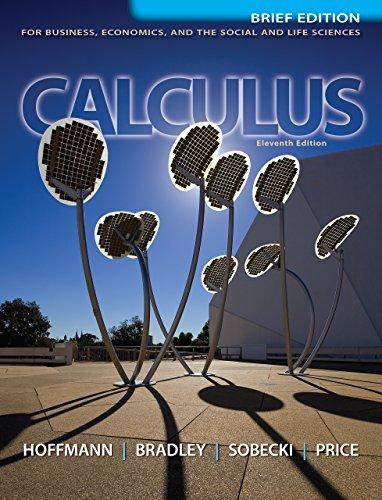The smaller the resistance to flow in a blood vessel, the less energy is expended by the
Question:
The smaller the resistance to flow in a blood vessel, the less energy is expended by the pumping heart. One of Poiseuille’s laws* says that the resistance to the flow of blood in a blood vessel satisfies

where L is the length of the vessel, r is its radius, and k is a constant that depends on the viscosity of blood.
a. Find F, ∂F/∂L and ∂F/∂r in the case where L = 3.17 cm and r = 0.085 cm. Leave your answer in terms of k.
b. Suppose the vessel in part (a) is constricted and lengthened so that its new radius is 20% smaller than before and its new length is 20% greater. How do these changes affect the flow F(L, r)? How do they affect the values of ∂F/∂L and ∂F/∂r?
Step by Step Answer:

Calculus For Business, Economics And The Social And Life Sciences
ISBN: 9780073532387
11th Brief Edition
Authors: Laurence Hoffmann, Gerald Bradley, David Sobecki, Michael Price





